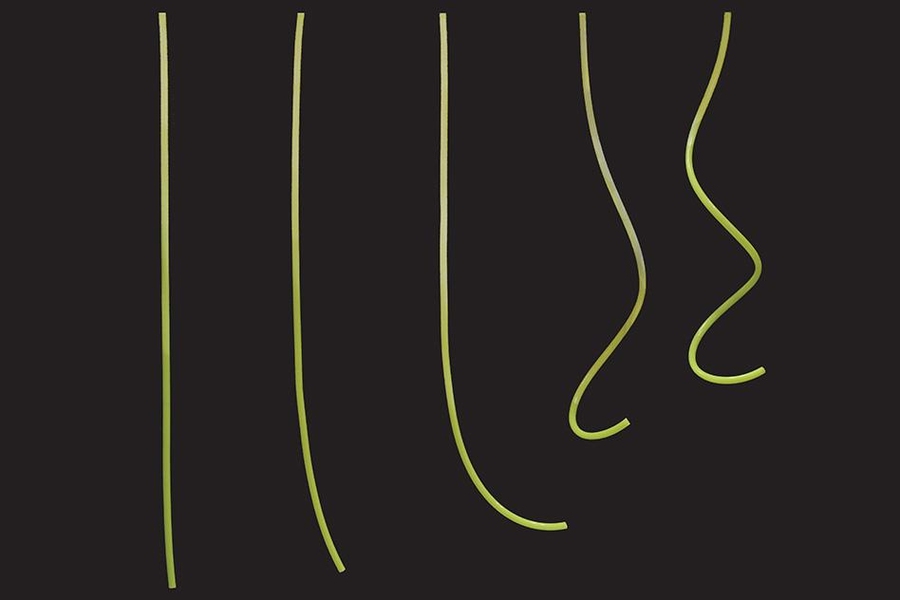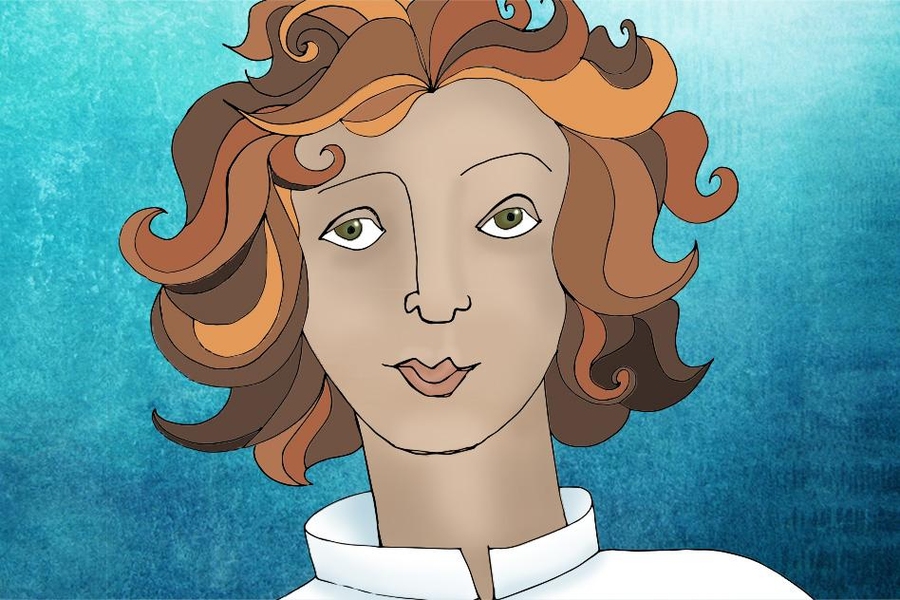The heroes and villains in animated films tend to be on opposite ends of the moral spectrum. But they’re often similar in their hair, which is usually extremely rigid or — if it moves at all — is straight and swings to and fro. It’s rare to see an animated character with bouncy, curly hair, since computer animators don’t have a simple mathematical means for describing it.
However, change may be coming soon to a theater near you: In a paper appearing in the Feb. 13 issue of Physical Review Letters, researchers at MIT and the Université Pierre et Marie Curie in Paris provide the first detailed model for the 3-D shape of a strand of curly hair.
This work could have applications in the computer animation film industry, but it also could be used by engineers to predict the curve that long steel pipes, tubing, and cable develop after being coiled around a spool for transport. In the field, these materials often act like a stubborn garden hose whose intrinsic curves make it behave in unpredictable ways. In engineering terminology, these items — and hair — are all examples of a slender, flexible rod.
Co-authors on the paper are Pedro Reis, an assistant professor in MIT’s Department of Civil and Environmental Engineering and Department of Mechanical Engineering; Basile Audoly and Arnaud Lazarus, of the Université Pierre et Marie Curie; and former MIT graduate student James Miller, who is now a research associate at Schlumberger-Doll Research. Miller worked on this project as part of his doctoral thesis research and is lead author of the paper.
“Our work doesn’t deal with the collisions of all the hairs on a head, which is a very important effect for animators to control a hairstyle,” Reis says. “But it characterizes all the different degrees of curliness of a hair and describes mathematically how the properties of the curl change along the arc length of a hair.”
When Reis set out to investigate the natural curvature in flexible rods, he wasn’t thinking of hair. But as he studied several small flexible, curved segments of tubing suspended from a structure in his lab, he realized they weren’t so different from strands of curly hair hanging on a head. That’s when he contacted Audoly, who had previously developed a theory to explain the 2-D shape of human hair.
Using lab experimentation, computer simulation, and theory — “the perfect triangle of science,” Reis says — the team identified the main parameters for curly hair and simplified them into two dimensionless parameters for curvature (relating to the ratio of curvature and length) and weight (relating to the ratio of weight and stiffness). Given curvature, length, weight, and stiffness, their model will predict the shape of a hair, steel pipe, or Internet cable suspended under its own weight.
As a strand of hair curls up from the bottom, its 2-D hook grows larger until it reaches a point where it becomes unstable under its own weight and falls out of plane to become a 3-D helix. Reis and co-authors describe the 3-D curl as a localized helix, where only a portion of the strand is curled, or a global helix, if the curliness extends the entire length up to the head.
A curl can change phase — from 2-D to 3-D local helix to 3-D global helix, and back again — if its parameters change. Because a strand of hair is weighted from the bottom by gravity, the top of the strand has more weight under it than the tip, which has none. Thus, if the weight on a hair is too great for its innate curliness, the curl will fail and become either straight or helical, depending on the strand’s length and stiffness.
“Artists in the computer animation industry often become entangled in questions of how to groom a head of hair on a hero character, or how to design the fur on a ferocious antagonist,” says Eitan Grinspun, a professor of computer science at Columbia University who was not involved in this project, but who in earlier work with Audoly and others developed the computer simulations for straight hair now used by many animation artists.
“The typical knobs [for hair traits] that are exposed in a basic animation system –– hair length, thickness, material stiffness, and so forth –– often do not impart upon the artist the level of physical intuition that one would like to have to get the job done,” Grinspun says. “Works such as that of Miller and co-authors offer a glimpse into a more intuitive approach to design.”
For the curvature study, Miller created flexible, thin rods using molds as small as a bottle of Tabasco sauce and as large as the columns in MIT’s Lobby 7 (about a meter in diameter). He injected a rubber-like material inside hollow flexible tubing wrapped around these molds. Once the rubber material cured and the tubing was cut away, Miller and Reis had flexible polyvinyl thin rods whose natural curvature was based on the size of the object around which they had been wrapped.
The researchers’ use of dimensionless numbers to describe innate curvature means the equation will hold true at all scales. Even with lengths measured in kilometers, the steel piping used by the oil industry is flexible enough to be spooled. “We think of steel pipes as being nice and straight but usually at some point they’re getting wrapped around something,” Miller says. “And at large dimensions, they’re so flexible that it’s like you and I dealing with a limp spaghetti noodle.”
“The mathematician [Leonhard] Euler first derived the equation for a slender elastic body — like a hair strand — in 1744,” Audoly says. “Even though the equations are well-known, they have no explicit solution and, as a result, it is challenging to connect these equations with real shapes.”
Leonardo da Vinci included the topic of hair in his notebooks; last year, Raymond Goldstein of Cambridge University used mathematics to describe the shape of a ponytail. “We focused on how to describe the properties of a bundle of hair composed of a very large number of filaments, and used methods from statistical physics to develop a quantitative model,” says Goldstein, who was not involved with Reis’ research. “One of the key issues was how to handle the distribution of intrinsic curliness found in real hair. Reis et al. focus in exquisite detail on the properties of a single curly hair under gravity, which is itself a very nontrivial problem due to the nonlinearities in the physics.”
“The fact that I am bald and worked on this problem for several years became a nice running joke in our lab,” Reis says. “But joking aside, for me the importance of the work is being able to take the intrinsic natural curvature of rods into account for this class of problems, which can dramatically affect their mechanical behavior. Curvature can delay undesirable instability that happens at higher loads or torsion, and this is an effect that engineers need to be able to understand and predict.”
This work was funded by the National Science Foundation, Schlumberger, the MIT-France Program, and a Battelle-MIT postdoctoral fellowship.
Press Contact:


Press Mentions
Scientific American
Rachel Nuwer writes for Scientific American about research from Professor Pedro Reis and his team that allows for more accurate rendering of curly hair in computer animations. “This is the first time someone described the full 3-D configuration of a single naturally curved hair,” explains Reis.
NBC
“Now, researchers at MIT, in Cambridge, Mass., and the Université Pierre-et-Marie-Curie (UPMC), in Paris, are teasing out the physics of curly hair,” writes Denise Chow of new MIT research to understand why and how hair curls.
Boston Globe
Boston Globe reporter Carolyn Johnson writes about how MIT researchers have created a toolset to predict how hair curls. Findings could be used to create realistic animated characters, as well as in the telecommunications, medical, or oil and gas industries.





